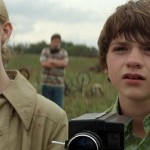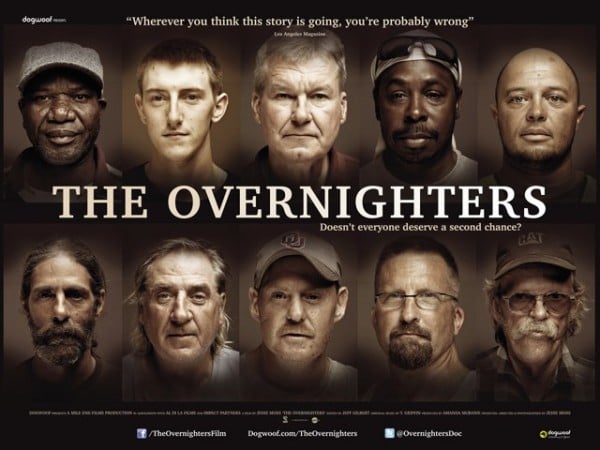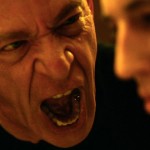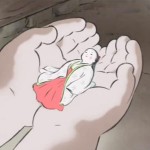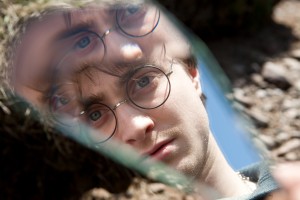 When the midnight showings have died down and author J.K. Rowling retires to her rooms stuffed with gold, will Harry Potter still matter? We’ve watched the boy wizard grow up and, with him, a generation of real-life children has reached adulthood. As he and his friends take their final bows in “Harry Potter and the Deathly Hallows: Part 2,” the popularity of the tale reassures in this cynical era us that self-sacrifice, honor, and decency will never go out of style.
When the midnight showings have died down and author J.K. Rowling retires to her rooms stuffed with gold, will Harry Potter still matter? We’ve watched the boy wizard grow up and, with him, a generation of real-life children has reached adulthood. As he and his friends take their final bows in “Harry Potter and the Deathly Hallows: Part 2,” the popularity of the tale reassures in this cynical era us that self-sacrifice, honor, and decency will never go out of style.
The kids are going to be all right.
As the film picks up the story, we find the wizard world suffering the seemingly hopeless occupation of the forces of the evil Lord Voldemort. His Death Eaters control the government. Hogwarts, the beloved school of magic, continues running under a wartime regime. Severus Snape, who murdered the wise Albus Dumbledore at the end of the last film, now imposes his will as Headmaster.
Those who remain faithful to the resistance group The Order of the Phoenix do so without their leader. Harry Potter has gone underground with his dear friends Hermione and Ron.
Their only hope is to find and destroy Voldemort’s remaining horcruxes, small talismans into which the evil wizard has placed pieces of his lifeforce for safekeeping. They mourn the death of their friend Dobby the Elf, whom Harry freed from slavery, and shudder in the shadows of horrors yet to come.
Their mission leads them first to burgle the supposedly impenetrable Goblin bank, then back to Hogwarts for a last stand against the Death Eaters. As his friends valiantly defend the school, Harry and learns that his destiny merges with that of Voldemort in a different way than he had supposed. He also learns the truth about Snape, the bitter teacher who hated Harry from the beginning, but whose actions throughout the years have been bafflingly inconsistent with his apparent loyalty to both Dumbledore and Lord Voldemort.
One of the brilliant aspects of JK Rowling’s work is that the series matures with the characters. While the first book and movie were a light and frothy tale of a boy’s first adventure in magic and the middle books concentrated on preteen romance and rivalries, Harry is all grown up now. Carefree days of school and teen romance are over for him, Hermione and Ron.
History has called them. As they’ve grown and learned more about the dark threat facing them, they have turned from childish pursuits and faced with grim determination their destiny to stop evil or die trying.
The serious tone of the movie reflects this reality. Gone are giggling schoolgirls and high-flying quidditch matches. The movie is filmed in grays and pale light with some disturbing images: Voldemort walking through puddles of blood, a distressing murder just off camera. Rated PG-13, it will be too intense for younger children. (There is one minor obscenity and no sexuality.)
The effects and acting are spectacular, without being distracting. Go ahead and spring for the 3D. It’s excellent. Like all the films, it can be hard to follow for those not familiar with the books. Daniel Radcliffe (Harry), Emma Watson (Hermione) and Rupert Grint (Ron) prove they were the right children to select for the roles all those years ago. Iconic characters abound: The flat-faced villain Voldemort played by Ralph Finnes and the wise mentor Dumbledore created by Michael Gambon. Alan Rickman’s conflicted Severus Snape, however, is the best new icon to come out of the series.
With its big payoffs and exact right tone, the film is the best of the bunch.
There more to it than just technical expertise. Another aspect of Rowling’s brilliance is that she shares the glory. Harry may be the hero, but the movie belongs also to Neville Longbottom (Matthew Lewis), a klutzy perpetual victim who finds his inner strength just when all hope seems lost. Scores of background characters have their moments in this film, although it doesn’t have time to do justice to everyone. Remus Lupin (David Thewlis), for example, suffers a truncated storyline.
It’s not a problem, though, because the emotion of the books comes through. Finally, we see students, teachers, and compatriots standing shoulder to shoulder to fight for what is right, even though victory seems impossible. The murkiness of the moral choices in the earlier books has cleared. Everyone must choose what side they are on.
Like the World War II generation on which this series is based, the students at Hogwarts rise to the occasion. Some pay the ultimate price, but they all instinctively know the ineffable and precious thing for which they fight: The right of house elves to someday be free and dragons to escape abuse; That wizards should be judged by their character and not the pureness of their blood; That terror and tyranny must be resisted.
In other words, freedom and justice.
It is this quality that will have you tearing up as characters again and again perform acts of heroism, using wands instead of tanks or Spitfire airplanes. The film is the Battle of Britain, the French resistance, and D-Day rolled into one.
When Harry, who started the series confused, arrogant, and occasionally selfish, willingly lays his life down so that others may live in peace, he is every G.I. on Omaha Beach and every RAF pilot above London. Rowling’s brilliance shines once again when she ends the series with a glimpse of a peaceful and normal future, the very picture of why soldiers fought in the first place.
In total, the books have sold over 400 million copies in more than 60 languages. The movies have brought in more than $2 billion (with a b!) worldwide. Something more than the rich and wonderful world Rowling created is at work. Children (and adults) crave real heroes.
Rowling has given us just that.
Thank you, Harry Potter.

